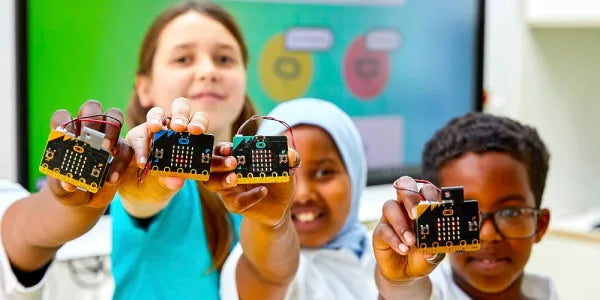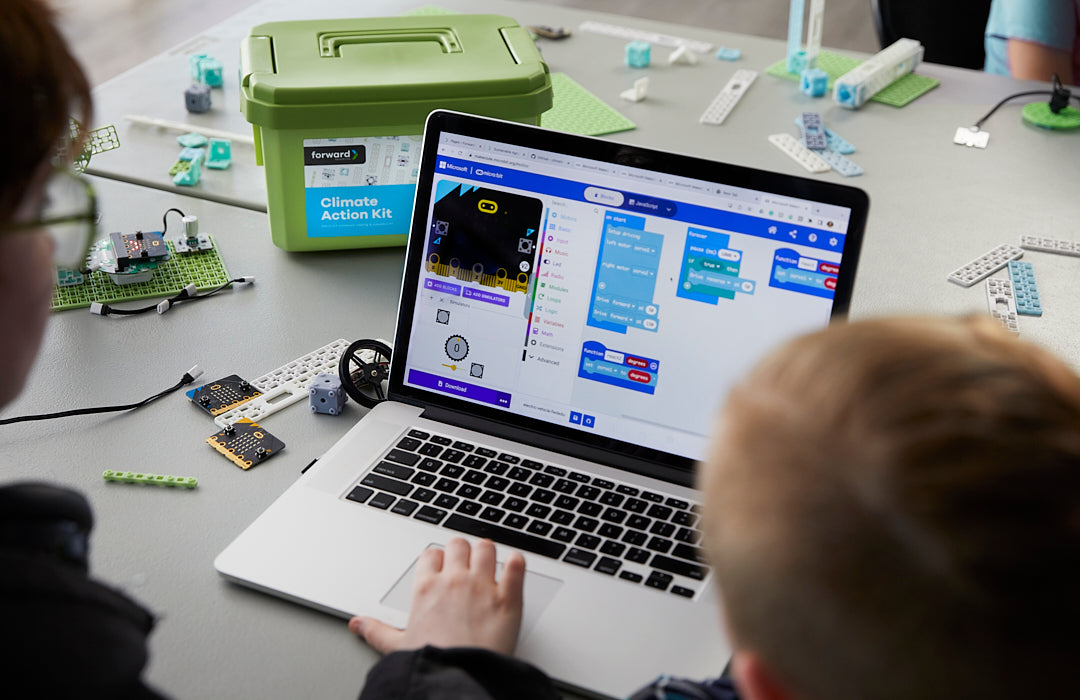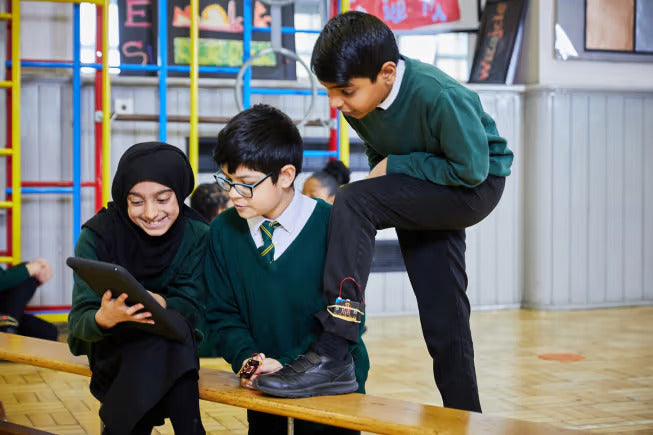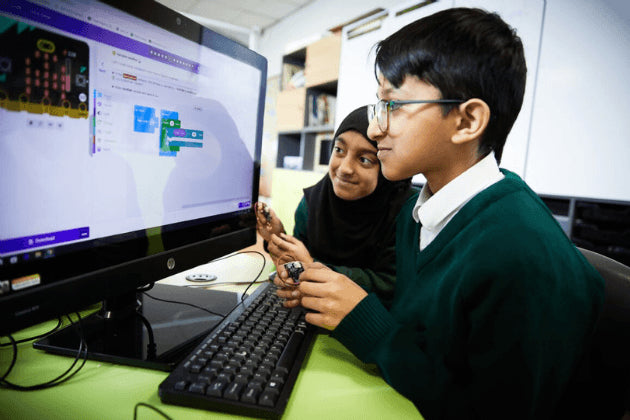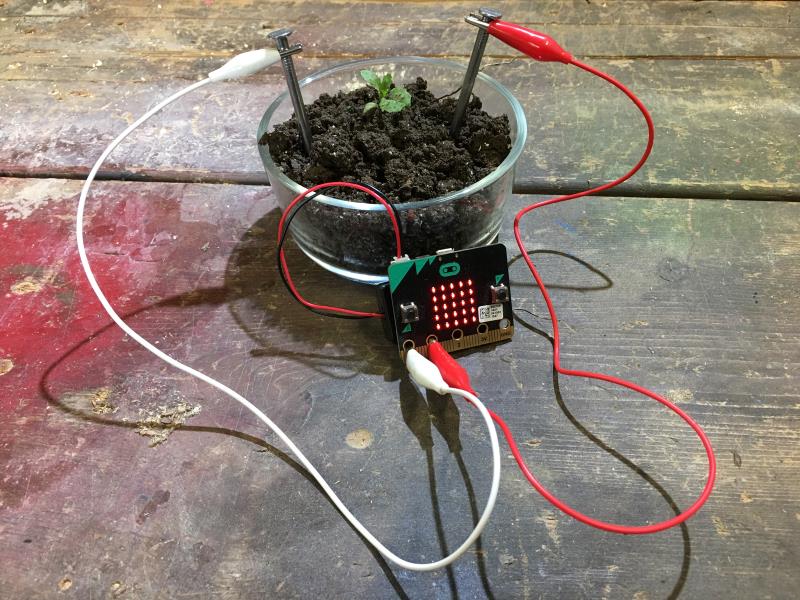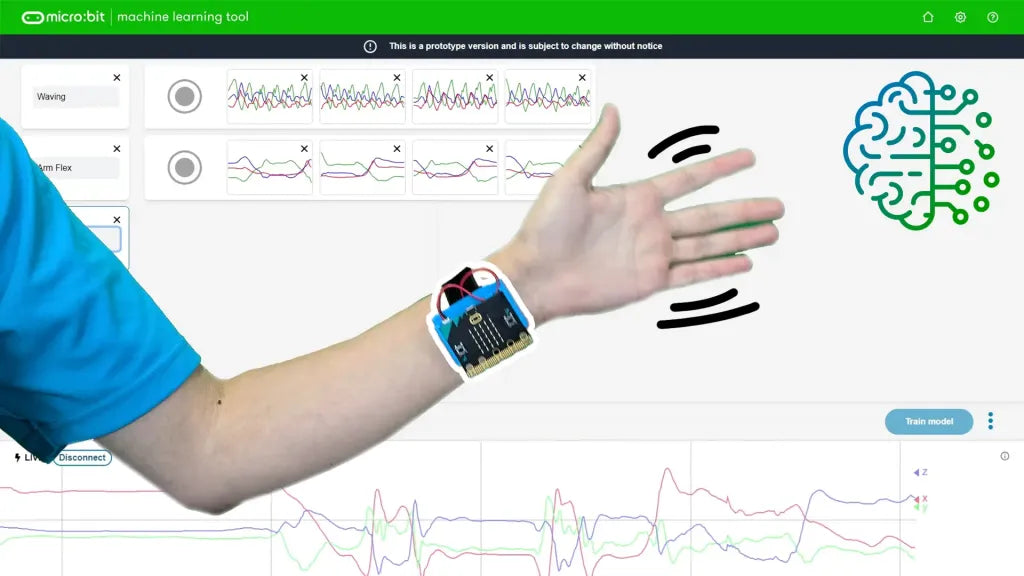Meet the micro:bit. Computing made physical.
The BBC micro:bit is an award-winning programmable device that allows students to get hands-on with coding and digital making.


Easy. Effective. Engaging.
What is the micro:bit?
The BBC micro:bit is a pocket-sized computer designed to make coding and programming accessible and fun for everyone, especially children.
- Gather data for mathematics and science
- Make learning playful
- Bring digital coding to lift
- Interact with dozens of input/output features
- Build on learning with hundreds of accessories
Shop micro:bits
micro:bit Features



Professional Development
micro:bit Training Resources
If you're new to micro:bit or coding with Makecode, the Forward Education Educator Courses can help guide you through getting started with micro:bit.
Interested in LIVE Professional Development?
Forward Education offers live, virtual professional development training for groups of educators!





Introduction to Physical Computing with micro:bit
Join us for this immersive, 90-minute workshop designed to empower educators to confidently introduce their students to physical computing using the micro:bit.
What the session covers:
🔍 Exploring the micro:bit: Explore the micro:bit's capabilities, understand input and output, and get hands-on with the MakeCode editor through engaging coding challenges.
📚 Code Your First Project: Design an algorithm and code a working step counter project, mastering core coding concepts like loops, conditionals, and variables.
🔧 Resources and Next Steps: Discover supportive classroom resources and learn how Forward Education can take your physical computing journey to the next level with products like our Climate Action Kit and CHARGE.
micro:bit Compatible Products
micro:bit acts as the 'brain' in many coding & robotics products and projects. Check out some of the many micro:bit compatible accessories.








micro:bit FAQs
Missing something? Please contact our team with any additional questions or inquiries.
What is a micro:bit?
The BBC micro:bit is a pocket-sized, programmable computer designed to teach students about coding, electronics, and digital creativity. It’s ideal for use in classrooms and at home.
What can I do with a micro:bit?
You can build games, create digital sensors, make music, control motors, and even develop wearable tech. It's perfect for hands-on STEAM and robotics projects.
What is the difference between micro:bit V1 and V2?
The micro:bit V2 includes additional features like a built-in speaker, microphone, and improved processor. It’s more powerful and offers a wider range of project possibilities.
Do I need any accessories to use the micro:bit?
The micro:bit requires a USB cable and power source to get started.
If you're interested in using a rechargeable power source for your micro:bit, check our the CHARGE for micro:bit.
Many projects also use expansion boards, sensors, motors, or all-in-one kits to extend functionality.
Is the micro:bit suitable for classroom use?
Absolutely. The micro:bit is widely used in schools around the world to teach coding, robotics, and engineering. Forward Education offers micro:bit classroom kits and curriculum resources designed specifically for teachers.
Can I use the micro:bit with other coding platforms?
Yes! The micro:bit supports Microsoft MakeCode, Python, and JavaScript. You can code online and easily download programs to your device.


























